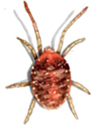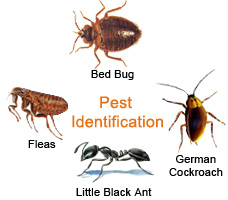Eco-Friendly Pest Control Service in NYC and Beyond.
Bird Mites
 Adult bird mites have eight legs, while the larvae have six. Their body shape is the same as ticks', approximately 1/32-inch in length, although bird mites are more transparent than ticks. They also have no festoons like ticks do (rectangular areas on the posterior edge of the abdomen of many hard ticks). There are three types of bird mites - the chicken mite, the northern fowl mite and the tropical fowl mite.
Adult bird mites have eight legs, while the larvae have six. Their body shape is the same as ticks', approximately 1/32-inch in length, although bird mites are more transparent than ticks. They also have no festoons like ticks do (rectangular areas on the posterior edge of the abdomen of many hard ticks). There are three types of bird mites - the chicken mite, the northern fowl mite and the tropical fowl mite.
The chicken mite has a very broad dorsal shield, which gradually tapers toward the posterior end. The northern fowl mite's dorsal shield is very wide, ¾ of its length, and then becomes very narrow. The tropical fowl mite's dorsal shield has a teardrop shape.
Habits
The chicken mite is the most common mite on sparrows, starlings, and pigeons. It is responsible for causing humans dermatitis the most, with their bite. It is an occasional nocturnal feeder and do not stick with the host bird. It can be found in cracks, crevices, and/or the nest in daytime. The northern fowl mite also readily bite humans. It also cause dermatitis, although it is less annoying. This mite is a common parasite of sparrows, starlings and pigeons. They spend most of their time on these birds. In winter they can be found in bird nests and when the nest is vacated, they migrate out of it as well.
The tropical fowl mite has very similar habits to the northern fowl mite. It is commonly associated with sparrows but prefer to remain in the bird nests instead of on the birds. They too bite humans and can cause dermatitis. Chicken mite females deposit eggs in batches of seven or less in crevices and under bird nests. Growth from egg to adult takes around seven days. An adult chicken mite, well fed, can survive up to four or five months without feeding. The northern and the tropical fowl mites' biology are also similar. The females lay around three eggs on the host bird within two days of having become an adult. The growth time (egg to adult) is approximately seven days. Tropical fowl mites cannot survive more than ten days without the host bird and, therefore, pose a lesser problem in human habitats.
How to Prevent Damage
- First identify the type of bird mite.
- Locate and remove the source, usually the nest (wear gloves and a mask).
- Treat with approved insecticide sprays or powder.
- Vacuum clean in case found inside the house.
- Steam iron all clothing on high heat before wearing.
- Put infested items in sealed bags with mothballs
- Call professionals if things go beyond your control.
We emphasize on using green methods to exterminate Bird Mites that are both very effective as well as environmentally friendly.
Roaches/Pests Control
Request Free Consultation
"The ants in my garden had really become a nuisance for me. When one of my friends told me about NYGreenEco, I called them to have a look on the garden and offer a solution. They cooked up a customized solution to help me get rid of the miscreants. The way they work is really amazing!"





